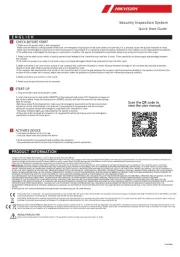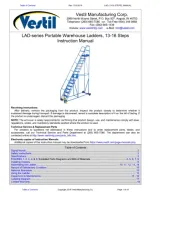Xaoc Odessa Bruksanvisning
Xaoc
ej kategoriserat
Odessa
Läs gratis den bruksanvisning för Xaoc Odessa (12 sidor) i kategorin ej kategoriserat. Guiden har ansetts hjälpsam av 37 personer och har ett genomsnittsbetyg på 4.7 stjärnor baserat på 19 recensioner. Har du en fråga om Xaoc Odessa eller vill du ställa frågor till andra användare av produkten? Ställ en fråga
Sida 1/12

ODESSA
variable
spectrum har-
monic cluster
oscillator
Model of 1975
operator’s manual rev. 1975/1.2
Produktspecifikationer
| Varumärke: | Xaoc |
| Kategori: | ej kategoriserat |
| Modell: | Odessa |
Behöver du hjälp?
Om du behöver hjälp med Xaoc Odessa ställ en fråga nedan och andra användare kommer att svara dig
ej kategoriserat Xaoc Manualer

5 Augusti 2025

5 Augusti 2025

5 Augusti 2025

5 Augusti 2025

5 Augusti 2025

5 Augusti 2025

5 Augusti 2025

5 Augusti 2025

5 Augusti 2025

5 Augusti 2025
ej kategoriserat Manualer
- OnTruss
- Corsair
- MSI
- On-Q
- Timbersled
- GRE
- WHALE
- OvisLink
- Ulsonix
- Duracell
- Summit
- Xplora
- ARRI
- Fisher Paykel
- Aqua-Vu
Nyaste ej kategoriserat Manualer

23 Oktober 2025

23 Oktober 2025

23 Oktober 2025

23 Oktober 2025

23 Oktober 2025

23 Oktober 2025

23 Oktober 2025

23 Oktober 2025

23 Oktober 2025

23 Oktober 2025